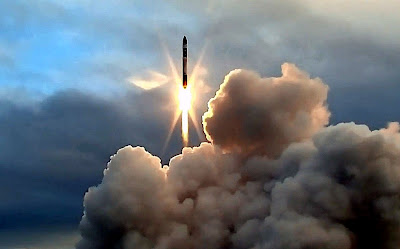Because 3D printers can produce a wide variety of three-dimensional objects, the potential commercial and industrial applications are generating the arrival of a new manufacturing revolution, known as Industry 4.0.
Industry 4.0 is spreading in all the fields of manufacturing industry, and it also includes (¿why not?) defense industry. Some examples:
- The U.S. National Aeronautics and Space Administration (NASA) is already experimenting with 3D printing in the manufacture of rocket engines. (Dfr.: Kimberly Newton, “NASA Engineers Test Combustion Chamber to Advance 3-D Printed Rocket Engine Design,” NASA.gov, December 8, 2016)
- The U.S. and British Navies have been using 3D printers on aircraft carriers at sea to produce customized UAVs (Unmanned Aerial Vehicles) during deployments. (Cfr.: Kyle Mizokami, “The future of America’s aircraft carriers? Floating drone factories,” The Week, April 21, 2016; Jon Rosamond, “U.S., U.K. Navies Expanding Experiments Using 3D Printing,’ USNI News, September 22, 2015.)
But not all about 3D printing is pink-coloured, as it presents certain risks that must be taken into account. In this regard, Matthew Kroenig and Tristan Volpe assessed the risk of nuclear proliferation in their article titled “3D printing the bomb?” (Cfr.: The Washington Quarterly, Vol. 38, No. 3, Fall 2015, pp. 7-19) and the topic is garnering attention among policy analysts.
Much of the concern surrounds whether 3D printing represents a new way for a state-level WMD program to circumvent nonproliferation export controls, thanks to use a convenient way to produce sensitive components: The law uses to run behind the life, and today we have to face the risk of following guidelines developed by the Nuclear Suppliers Group and Missile Technology Control Regime in an era when 3D Printing didn't exist... but to be applied followed in a new era where anybody can send electronically some different CAD files corresponding to different parts of a sensitive assembly, to be printed in different 3D printing service bureaus located in different countries. ¿Impossible? Not at all: If you can imagine it, it can happen. And if the Nuclear Suppliers Group and the Missile Technology Control Regime do not update their guidelines to the new challenges represented by the Industry 4.0, the hidden production and sale of sensitive WMD-relevant dual-use goods is not entirely hypothetical.

